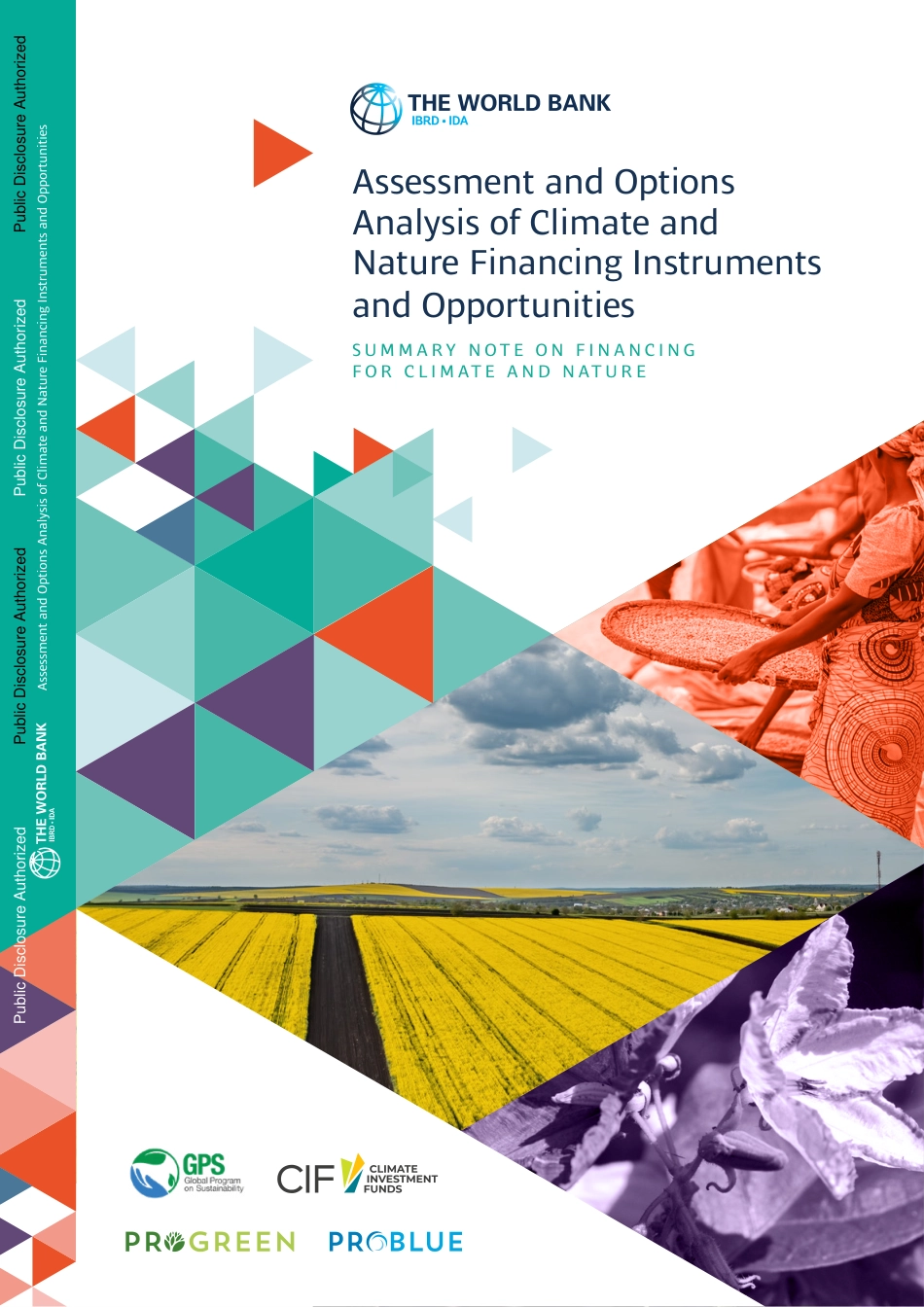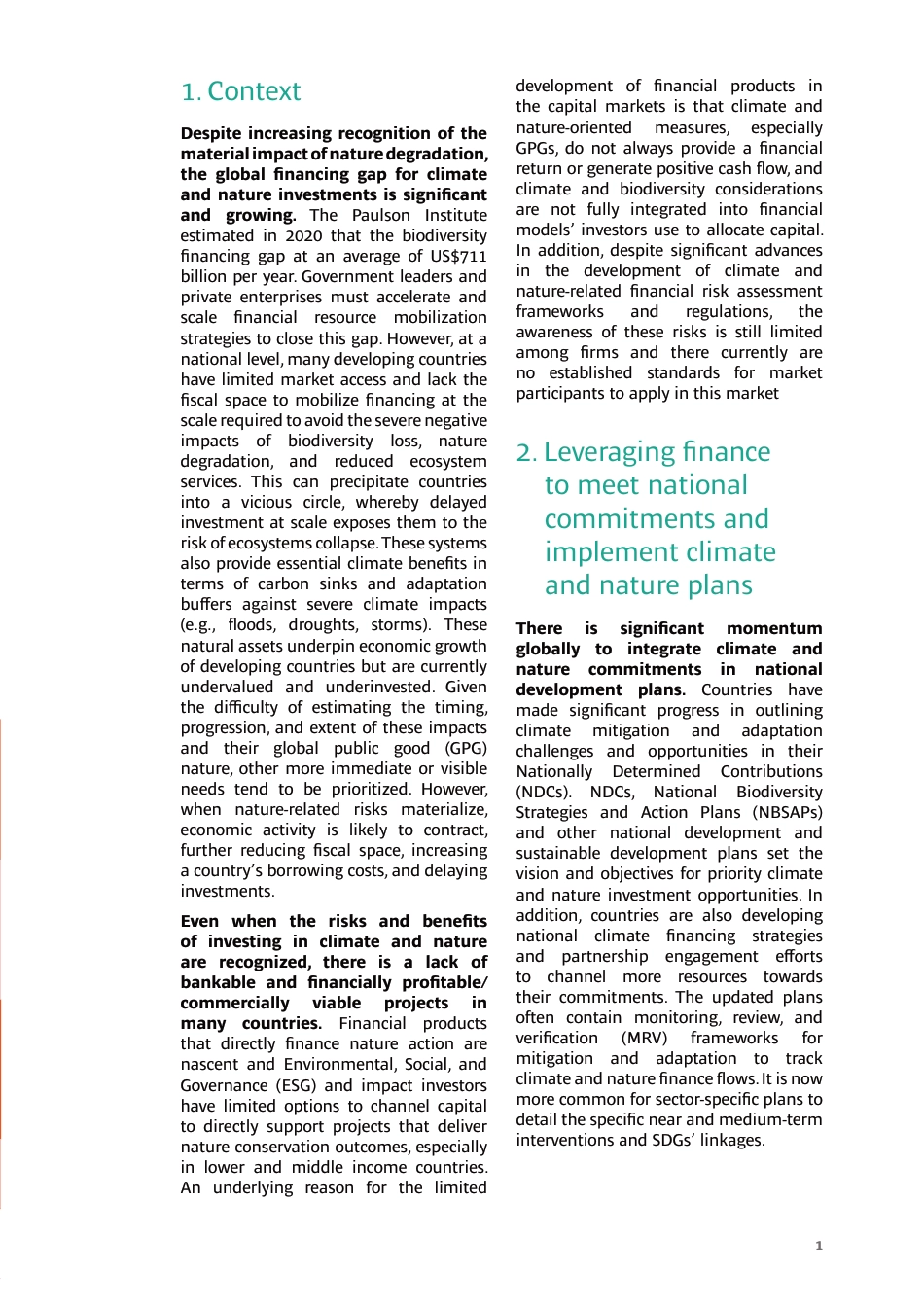Assessment and Options Analysis of Climate and Nature Financing Instruments and Opportunities S U M M A RY N O T E O N F I N A N C I N G F O R C L I M AT E A N D N AT U R EAssessment and Options Analysis of Climate and Nature Financing Instruments and OpportunitiesPublic Disclosure AuthorizedPublic Disclosure AuthorizedPublic Disclosure AuthorizedPublic Disclosure AuthorizedbElisson Wright, James Seward, Fiona Stewart, Anderson Silva, Federico Azpiroz Costa, Rachel Mok1development of financial products in the capital markets is that climate and nature-oriented measures, especially GPGs, do not always provide a financial return or generate positive cash flow, and climate and biodiversity considerations are not fully integrated into financial models’ investors use to allocate capital. In addition, despite significant advances in the development of climate and nature-related financial risk assessment frameworks and regulations, the awareness of these risks is still limited among firms and there currently are no established standards for market participants to apply in this market2. Leveraging finance to meet national commitments and implement climate and nature plans There is significant momentum globally to integrate climate and nature commitments in national development plans. Countries have made significant progress in outlining climate mitigation and adaptation challenges and opportunities in their Nationally Determined Contributions (NDCs). NDCs, National Biodiversity Strategies and Action Plans (NBSAPs) and other national development and sustainable development plans set the vision and objectives for priority climate and nature investment opportunities. In addition, countries are also developing national climate ...



